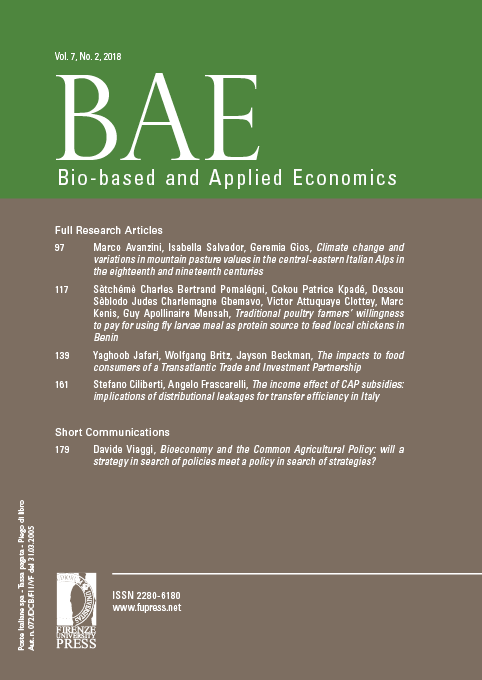Published 2019-12-18
Keywords
- Trade Policy,
- Imperfect competition,
- Heterogeneous firms,
- Simulations
How to Cite
Abstract
Primary agriculture is a textbook example of competitive supply with many producers outputting homogenous products, in contrast to firms in the processed food sector produce heterogeneous products while differing in productivity. Our model of trade reform explicitly accounts for the differences between the markets for primary agriculture and food processing. To demonstrate this point, we use a computable general equilibrium (CGE) model to quantify potential impacts of a trade agreement between the EU and US. Crucially, our heterogeneity-firm setup allows for the allocation of NTMs as ‘fixed costs’, which provides an alternative angle to previous literature that only considered NTM costs in a more conventional framework (e.g., tariff equivalent). Further, the use of this framework allows us to provide detailed welfare impacts, providing more information on the impacts to consumers who purchase mainly processed food and little primary agricultural output, a point often unrepresented in previous analysis of NTM reform.






